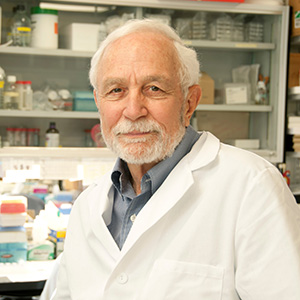Scientific Program

Bruce D. Murphy
Faculty of veterinary medicine, University of Montreal, Canada
Biography:
Bruce D.Murphy's laboratory has focused on the role of orphan nuclear receptors of the NR5A family in regulation of reproductive events. We have shown that NR5A2, aka liver receptor homolog-1, is essential for the processes of ovulation and luteal function. Its expression in the uterus is likewise necessary for establishment of gestation. NR5A1, aka steroidogenic factor-1, is necessary for maturation of ovarian follicles. Our current studies are aimed at exploring the multiple mechanisms by which NR5A1 and NR5A2 regulate ovarian events, including proliferation, differentiation and cytoskeletal remodeling. Our investigations are characterized by phenotypic analysis of targeted mutations in mice combined with global approaches to determining the widespread molecular changes that occur associated with depletion of the NR5A genes.
Abstract
Statement of the problem: Pancreatic cancer remains one of the deadliest cancers despite much progress in the science of tumour molecular characterisation and treatment strategies. The introduction of targeted treatments and immunotherapies has yet to provide desirable effect comparable with other cancers such as breast cancer and melanoma. This can be attributed to a pancreatic cancer lower immune-sensitivity and the ability to successfully evade the surveillance of immune system, particularly having resistance against lethal effects of cytotoxic T lymphocytes (CTLs). Tumour-immune resistance is mediated by tumour immune-modulators (TIM) that engage immune-inhibitory receptors on CTLs. Although past research has identified several interaction mechanisms, there is no single study that clearly delineates the molecular dynamics taking place between pancreatic tumour cells and CTLs. Elucidating pancreatic cancer molecular mechanism of immune-evasion and immune-resistance has the potential of identifying downstream onco-targets regulated by TIM and the possibility of developing more effective therapeutic agents.
Methodology & Theoretical Orientation: Exome and transcriptome sequencing of pancreatic tumour cells (from patient samples) and 6 pancreatic cell lines will be performed before and after exposure to chemo- and immune-therapeutics to identify genomic and expression patterns of sensitive and resistant tumour cells. Downstream targets regulated by TIM will be characterised by MudPIT (Multidimensional Protein Identification Technology). Results validation will be obtained using gene silencing shRNA assays for selected oncotargets, followed by exposure to chemo- and immune-therapeutics. Various bioinformatics tools and databases will be used to analyse exome and transcriptome sequence data. Additionally, evaluation of in-silico bioinformatics tools for functional variomics and network perturbation will be performed with the aim to identify best genotype-phenotype connection/prediction algorithms.
Expected Outcomes: this study is expected to provide insight to the role of pancreatic tumour immune mediators (TIM) in driving immune inhibitory effects of cytotoxic T-lymphocytes (CTL). The findings will help in understanding how pancreatic cancer drives immune evasion and in identification of onco-targets for drug development. Conclusion and Significance: The outcomes of the study have the potential of Improving prognosis and clinical outcomes in patients with pancreatic cancer through the development of new therapeutic approaches and strategies.
- Reproductive Endocrinology
- Cryopreservation
- Reproductive Physiology and Metabolic Disorders
- Assisted Reproductive Technology (ART)
- Reproductive Medicine & Sexually Transmitted Diseases
- Reproductive Immunology
- Obstetrics & Obstetricians
- Infertility Drugs and related risk
- Fertility Awareness & Human Reproductive Cancers
- Polycystic Ovary Syndrome (PCOS)
- Latest Innovation in Gynaecological Pathology
- Oncology & Its subdivision
- Reproductive Health & Hazards
- Reproductive Toxicology

